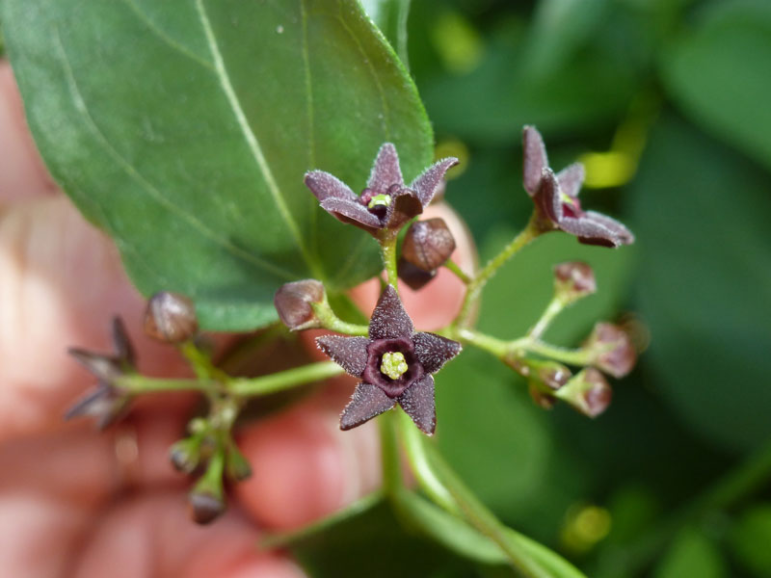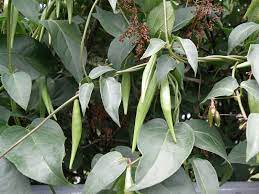
By Nicole Gardner and Douglas Hood
Black swallow-wort is a non-native, highly invasive plant that is poisonous to butterfly populations and other animals, and which toxifies the soil to benefit itself and harm other plants. We need to act right now to stop its spread and protect the Monarchs, other animals, and other plants.
Black swallow-wort can be found all around Watertown, sprouting up through and even strangling lush well-established perennials and shrubs, along chain-link fences, in empty patches of dirt, or coming up between pavement cracks. It looks like a delicate vine, with shiny green leaves in pairs, often twisting in pairs around fences, bushes, and other plants. It has a very tiny dark purple star-shaped flower. Around now, its slim, smooth, green seed pods are out. When its seed pods ripen and open, they release thousands of seeds into the air, which are viable for years.
We can stop its spread across Watertown by acting now, while seed pods are still green. Just cut down the plant at the ground level, and put every bit of it — seed pod, vine, and leaves — in a plastic bag, which you should seal and then double bag before putting in your black trash container for incineration. Loose bits of leaves or vine will root, so be sure to put every bit in the bag. Even better is to dig up the entire plant and put it, and the soil, in a plastic bag and so on, but this isn’t always possible.

At a minimum, cut off the pods and dispose of them properly.
Very important: do not put any part of this plant in your yard waste. It will survive and the plant will be spread even further.
You may be wondering about glyphosate (a.k.a. RoundUp). It has limited effect and will require annual applications, and the plant develops a resistance if treated before flowering. WARNING: glyphosate is a possible human carcinogen. It kills vegetation indiscriminately, so you may damage your other treasured plants if you go this path.
The time is now for us to stop the spread!
There are lots of places to learn more:
Invasive Vines Swallow Up New York’s Natural Areas from Cornell University: https://news.cornell.edu/stories/2014/04/invasive-vines-swallow-new-yorks-natural-areas?fbclid=IwAR1fHYB-PKyl_GrH9YY2eaY0Y5WDoruXI07nhXmsor8g0tKRj1PZzF-Wp4U
Pale Swallowwort Response to Cutting and Herbicides from Cornell University: https://weedecology.css.cornell.edu/pubs/2013%20DiTommaso%20et%20al%20Published%20%20IPSM%206-381-390%20PSW%20response%20to%20cutting%20&%20herbicides.pdf?fbclid=IwAR2he524cH6GZLYWV4N9oJ446do2pvh6SYgWvfn6EuuyDJP59v_RxZ2Lclg
Invasive Species—Best Control Practices Black and Pale Swallow-worts (Michigan State University): https://mnfi.anr.msu.edu/invasive-species/Swallow-wortBCP.pdf?fbclid=IwAR2XMWNflgqYnB0zwC-Pn-SQmcEEbzxirpNmgfNojAymKiTzHO7xqXNxtHQ
Thanks for posting this. I see it everywhere when I’m walking my dog. I wish the high school had a team of kids who could run around all summer taking care of them 🙂
The Japanese knotweed is a huge problem along the river too, and I see them sprouting up here and there around town now.
Great idea, Corinna!
Can the town not spare some funds, perhaps for as team of Watertown High grads, to form a team to remove this damaging plant from public properties? The students could earn funds for college or a nest egg for their future and help eradicate a public problem at the same time. It would be a worthy summer jobs program.
Surely there are young people here who could use the money and would be pleased to perform a service to the town and nature in general. Form a black swallow wort SWAT team!
Good to know this! Thanks!